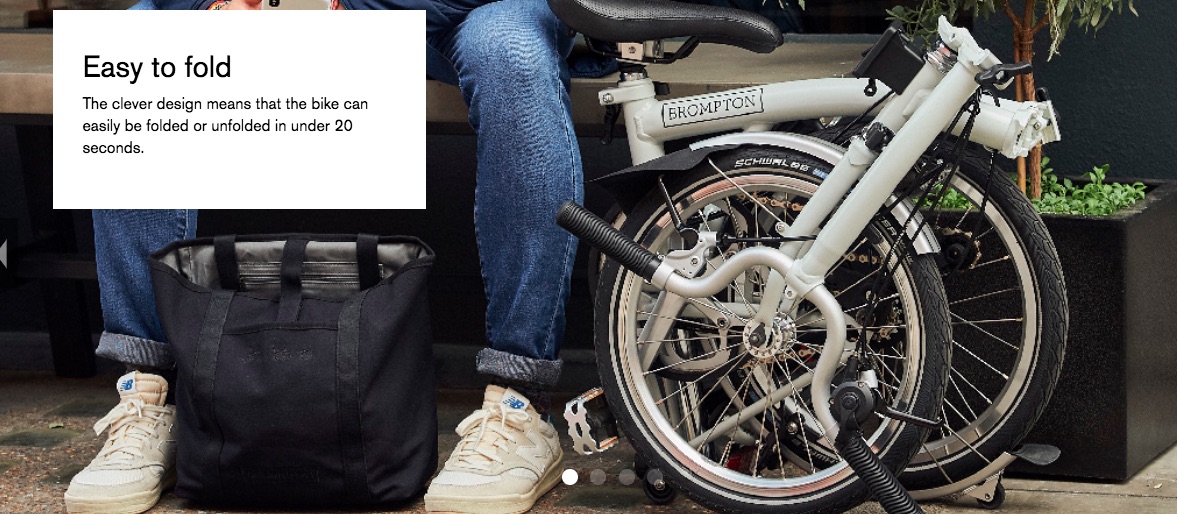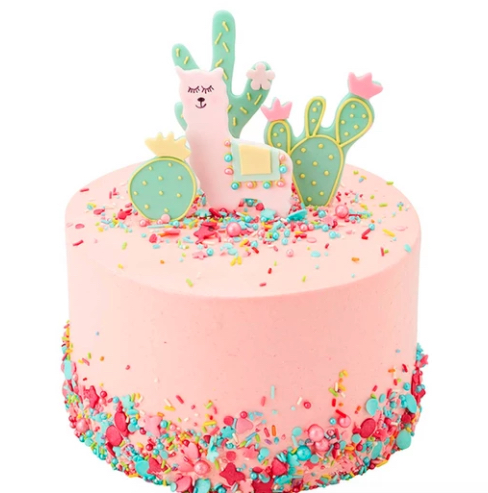
A product description is much more than a few words about the products you sell in your online shop. A good product description informs shoppers and can persuade them to pull the trigger on a purchase.
If you don’t consider yourself a wordsmith, there’s no need to stress. You don’t need to be Shakespeare to write product descriptions that drive sales. In this guide to writing product descriptions, we’ll cover:
- What is a product description?
- Why are product descriptions important?
- How to write good product descriptions
Looking for a better way to manage your retail business? Watch a demo of Lightspeed to discover how our platform can help your business grow.Level up your retail management system
What is a product description?
A product description is a small section of text that features on your product pages that describes key features, benefits, and specifications (if necessary) of your product. Detailed product descriptions are a critical part of selling online. Product descriptions can be found on product pages, typically below a product’s name and price. They’re usually no longer than 300 words.
If you need to write a longer product description, such as for a highly technical product, consider linking to product manuals or adding other sections to your product pages, such as a reviews section, sizing chart, or specifications section.
Why are product descriptions important?
When it comes to finalising a sale, and getting customers to click ‘Buy now’, or ‘Add to Basket’, your product description is really important in giving context to your images and pushing customers to buy.
When you use the description to give examples of use cases, provide specifications, and practical information, or use emotional language to appeal to target customers, you can turn more online “window shoppers” into paying customers. Plus, when you incorporate search engine optimisation (SEO) keywords into descriptions, you make it easier for customers to find your products on Google and other search engines.
How to write good product descriptions
If you want to learn how to write great product descriptions that will entice your customers, drive more sales, and keep them coming back for more, you’re in the right place.
You don’t need to be a professional writer to write a great product description. You just need a thorough knowledge of your product and your customer. Here are nine tips and tricks to writing product descriptions that sell:
1. Start with SEO
Identify a keyword, or keywords, that you want your product to rank for on Search Engine Results Pages (SERPs), like Google, for example. You can use tools like Ahrefs, Semrush, Moz, or Google Keyword Planner, to find which keywords have a high search volume, and preferably, low competition.
You’ll need these keywords as these will form the basis for your product description. If you’re using keywords that have a high search volume, your webpage will perform better in SERPs.
Note: Do not skip this step. Your product description isn’t going to matter much if people can’t find it. SEO isn’t the most glamorous of tasks, but when it comes to your eCommerce presence, it is by far the most important.
Also, make sure to avoid what is known as ‘keyword stuffing’. This is the practice of overusing a keyword so that you rank better for that keyword. Google, and other search engines, now rank web pages on the basis of EAT (Expertise, Authoritativeness, and Trustworthiness). If your product description is naturally using a keyword, and doing so with EAT in mind, then, you’ll have nothing to worry about.
In general, your target keyword should appear in several places on each product page, including in the:
- Product description
- Product name (ex: “Green Hat with White Stripe”)
- Product page’s URL (ex: sampleboutique.com/green-hat-white-stripe)
- Alt-text of each product image
2. Write for your customers
When you write a product description, you need to write for your customers, and not just for Google’s search algorithm. You should think about your target audience. Imagine you’re chatting casually with them. Or, picture yourself standing next to them in a store, telling them about a product. How would the conversation go?
Think about the following questions when you create your buyer persona:
- What type of person are they?
- What are their interests and preferences?
- Why do they visit your website?
- What are their pain points or challenges?
- Do they appreciate humour or are they more serious?
- What emotional language would tug on their heartstrings and drive an impulse buy?
Use that language and tone in your product description to relate to the buyer. Choose words and phrases your customers would use.
Lightspeed customer, Vine and Bine, describe their new, featured wines with incredible detail. The target customer here would be someone who knows wine well, and wants to learn more about the vineyard it came from, plus the subtleties, nuances, and notes of the wine. So, naturally, that’s what the product description appeals to.

Source: Vine and Bine
3. Share the product benefits
Do you want to know the main difference between good writing and great writing in sales? Good writing will tell you what something does. Great writing will tell you why you need it. An all too common mistake when writing product descriptions is to only focus on a product’s features, and what the product does. It’s equally important to connect the customer to the benefits of your product, and why a customer needs those benefits.
A feature is a factual statement about a product (like what materials it’s made of or how much it weighs). A benefit is an experience or perk that the product delivers.
The benefit is the real motivation behind the purchase. This could be something like the materials used to make the product being long-lasting, or that the product could be lightweight; making it breathable and comfortable.
Ask yourself these questions to discover your product’s benefit:
- What’s in it for the customer?
- How will the product make their life better?
- What problem does this product solve?
Consider the experience that your product delivers and describe it. A buyer isn’t interested in mundane details. They want to know what happens when they purchase it.
Lightspeed customer, Brompton, sells bikes that fold. It shares one of its biggest benefits—compact, convenient transportation—in a call-out box on a product photo. Clearly stating and highlighting your benefits will make sure customers understand your product’s value proposition.

Source: Brompton
4. Explain contextual information
Sometimes, just looking at the pictures of a product online can leave you with many questions. Product descriptions should clarify any ambiguity that the photos may present.
A good example is how clothing sellers that use models in their photos should include the height and clothing size of the model. This gives you a better idea of how the clothing will fit you.
Details to include in a product description:
- Features: size, weight, materials, ingredients and any other pertinent information about the product components.
- Benefits
- Certifications
Lightspeed customer, Peggy Porschen, offers information about the size of the cakes photographed on its website as well as details of other items that will be included, such as a silver cake board.


Source: Peggy Porschen
Using visuals and copy together helps shoppers get a more complete understanding of what they’re buying and prevents any potential misunderstandings, disappointments, or even negative store reviews after a purchase.
5. Describe what your customers can’t experience
Since online shoppers can’t touch the products, your product description needs to speak to their senses.
Describe how the product feels, smells, sounds and tastes. Your job is to help the shopper imagine that they’re holding the product in their hands. This might require using more specific words instead of general terms.
Describing a blanket as being soft might be a bit general, but saying it’s “velvety” or “feathery” elicits an image that goes beyond “soft”. If you sell food, avoid generic terms like “delicious”, since this term could mean different things to different people. Chocolate, for example, could be “silky” or “bold.”
If you’re struggling with this, you can always do some competitive research and see what other companies in your industry are saying about their products and use this as a source of inspiration. Use an online thesaurus to expand your vocabulary and find some funky synonyms. Or, if all else fails, you can use a generative-chat tool like ChatGPT, or Google Bard, to provide some ideas to get started.
Note: Generative-chat tools, like ChatGPT, can be a great starting point for generating content, and ideas, if you’re struggling with working out what to say. But, you, and only you, can properly encapsulate your brand, and your voice. If you over-rely on tools like this, you run the risk of sounding like everyone else.
6. Tell a story
Everyone loves a good story. Your description is your one chance to help your reader imagine what it would be like to own your product.
Use the benefits you identified and describe how the customer will feel by owning and using your product. Stories help appeal to the customer’s emotions, and emotions sell products.
Tell the story of the product itself. How and where was it made? Is there anything special about it that someone wouldn’t know by simply looking at it? Give your customer the story behind the product.
For example, Todd Snyder, a luxury menswear brand and Lightspeed customer, uses details about the origin of the materials of a sweater to help shoppers experience the product before they’ve made their purchase.

Source: Todd Snyder
7. Use your brand voice
Every company should have a unique brand voice. What is a brand voice? It’s a defining document that outlines the tone and style of language that you use to communicate with customers.
You want your brand voice to reinforce your brand’s personality. How do you want your brand to be perceived? Funny? Honest? Friendly? Helpful? Ask yourself these questions and document your results. It’s important to define what your brand voice is and to use it consistently across all of your channels—from your social media accounts to your ads and your website copy.
8. Make your writing scannable
Product descriptions need to be easily scannable. The reality is that not everyone is going to carefully read them. Write shorter paragraphs. Having problems writing short descriptions? Try using Hemingway. It’s a great writing tool that helps you keep your writing short and effective.
9. Provide social proof
When it comes to new shoppers, you have to gain their trust before you gain their business. With every click on your website, shoppers are looking for signs that you’re trustworthy.
How can you gain their trust? A great way to do that is through online reviews. 78% of consumers trust online reviews as much as a personal recommendation.
Provide them with a sense of security by adding social proof such as product reviews. If your product won an award, mention that. If it was featured in the press, add an excerpt from the review. Or use a quote from a customer. Photos that show someone using the product in photos can also add credibility.
Any proof or external validation you can provide potential customers will get you one step closer to getting your next sale.
Write descriptions that sell
The customer experience is increasingly important, according to HubSpot. Having an online store shouldn’t deter you from connecting with your customers and providing them with the best experience.
Words matter. Giving your potential customers a first impression that clicks will be the difference between a purchase or a lost customer.
Online retailers must optimise their websites to connect with shoppers. By keeping your shopper, their desires and pain points in mind, you’ll know how to write product descriptions that sell.

News you care about. Tips you can use.
Everything your business needs to grow, delivered straight to your inbox.


